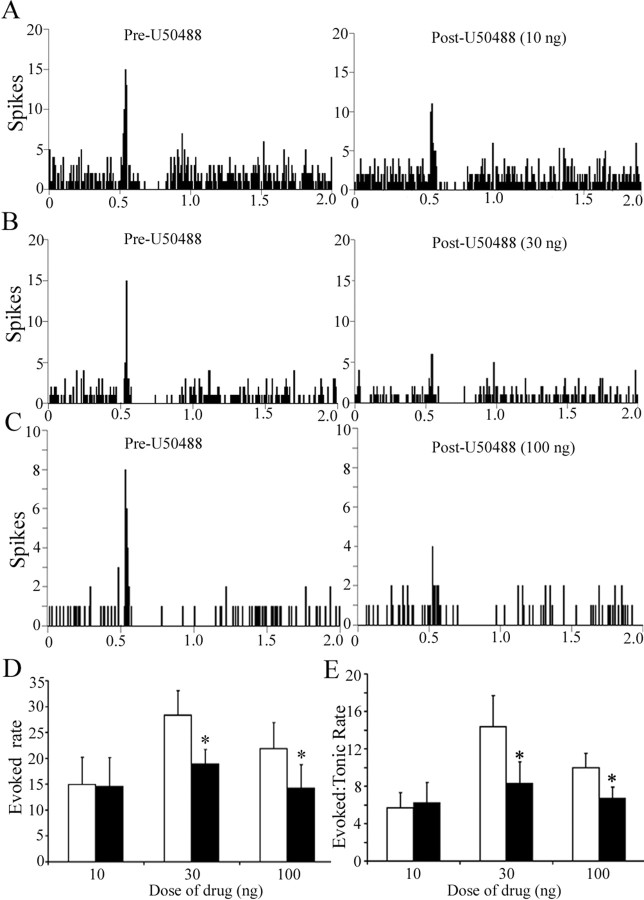Figure 3.
The synthetic κ-OR agonist U50488 attenuates LC sensory-evoked discharge in a dose-dependent manner. A–C, Representative PSTHs generated from trials of sciatic nerve stimulation before (Pre-U50488) and immediately after (Post-U50488) intra-LC microinfusion of U50488 at 10, 30, or 100 ng. The abscissas indicate the time in seconds before and after stimulus, which occurred at 0.5 s. The ordinates indicate the cumulative number of discharges (spikes) in each 8 ms bin. D, E, Quantification of sensory evoked discharge (Evoked rate) and of signal-to-noise ratio (Evoked:Tonic rate) before (white bar) and after (black bar) U50488. The abscissas indicate the dose (nanograms) and ordinates indicate the discharge rate (Hertz) in different components of the PSTH (D) or the ratio of evoked-to-tonic rate (E). The number of cells for 10, 30, and 100 ng was 9, 9, and 14, respectively. A two-way repeated-measures ANOVA for evoked rate revealed a significant main effect of treatment (F(1,29) = 21.36; p < 0.05) and interaction between treatment and dose (F(2,29) = 4.03; p < 0.05). Likewise, a two-way repeated-measures ANOVA for signal-to-noise revealed a significant main effect of treatment (F(1,29) = 7.22; p < 0.05). *p < 0.05, significantly different from pre-U50488. Error bars indicate SEM.

